Subphylum Vertebrata Suborder Serpentes Rank Species | Phylum Chordata Family Viperidae Higher classification Rattlesnake | |
 | ||
Similar | ||
Mojave green crotalus scutulatus
Crotalus scutulatus (common names: Mojave rattlesnake, Mojave green,) is a highly venomous pit viper species found in the deserts of the southwestern United States and central Mexico. It is perhaps best known for its potent neurotoxic-hemotoxic venom, which is considered the world's most potent rattlesnake venom. Two subspecies are recognized, including the nominate subspecies described here.
Contents
- Mojave green crotalus scutulatus
- Mojave green rattlesnake crotalus scutulatus sounds off
- Description
- Geographic range
- Habitat
- Conservation status
- Behavior
- Lethality
- Prognosis for bite victims
- Antivenom
- Unique venom characteristics
- Venom differences
- Subspecies
- References
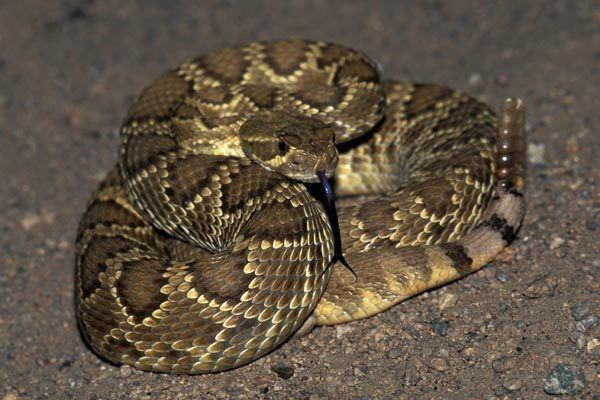
Mojave green rattlesnake crotalus scutulatus sounds off
Description
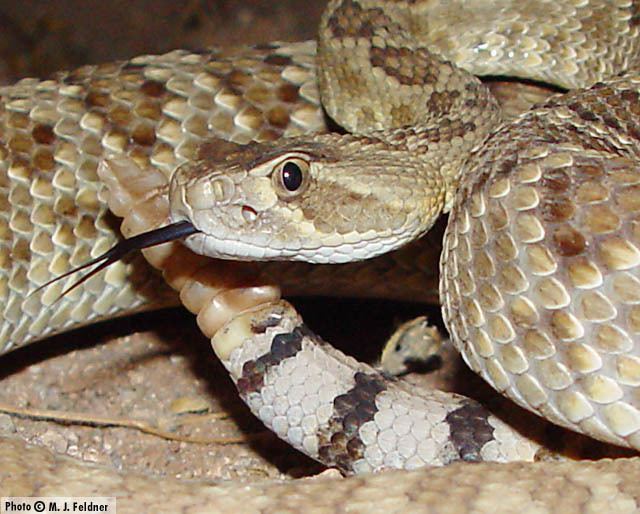
This species grows to an average of less than 100 cm (3.3 ft) in length, with a maximum of 137.3 cm (4.50 ft).
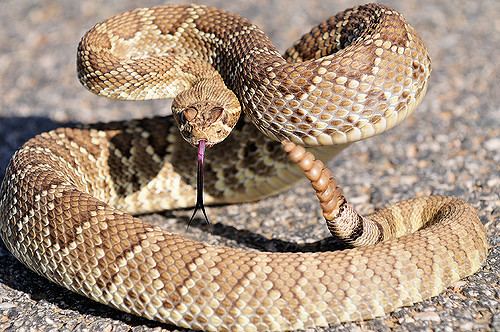
The color varies from shades of brown to pale green depending on the surroundings. The green hue found among Mojave rattlesnakes has led to them being known as "Mojave greens" in some areas. Like C. atrox (the western diamondback rattlesnake), which it closely resembles, C. scutulatus has a dark diamond pattern along its back. With C. scutulatus, the white bands on the tail tend to be wider than the black, while the band width is usually more equal in C. atrox. Additionally, C. scutulatus has enlarged scales on top of the head between the supraoculars, and the light postocular stripe passes behind the corner of the mouth. In C. atrox, the crown is covered in small scales, and the light postocular stripe intersects the mouth.
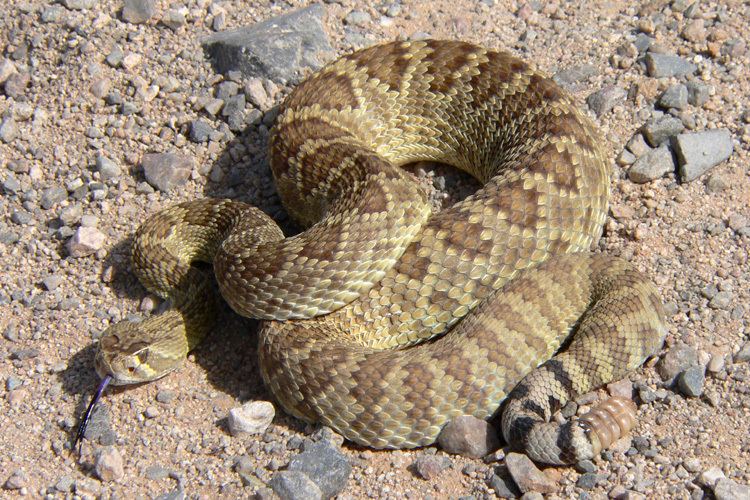
Campbell and Lamar (2004) support the English name "Mohave rattlesnake", but do so with some reluctance because so little of the snake's range lies within the Mojave Desert. They do not support the spelling "Mojave", because the name "Mohave" derives from the Native American term hamakhava.
Geographic range
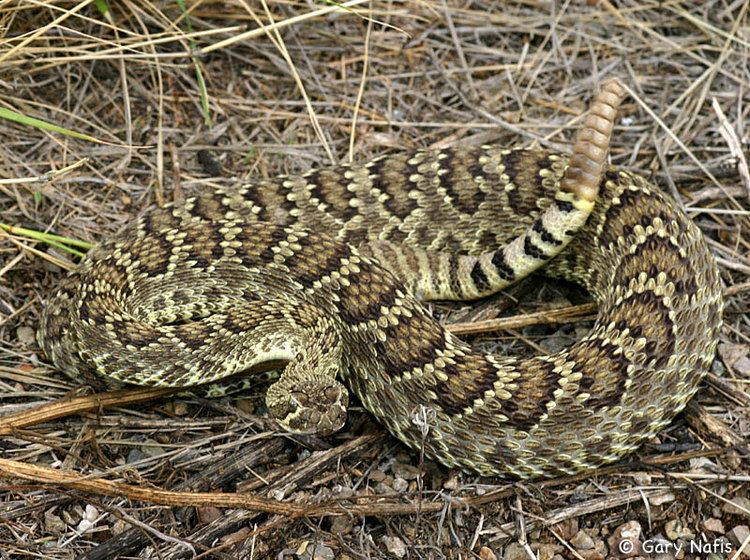
This snake is found in the southwestern United States in southern California, southern Nevada, extreme southwestern Utah, most of Arizona, southern New Mexico, and some of Texas. It also ranges southward through much of Mexico to southern Puebla. It is found in deserts and other areas with xeric vegetation from near sea level to about 2500 m altitude. No type locality is given. Smith and Taylor (1950) proposed "Wickenburg, Maricopa County, Arizona" (USA), while Schmidt (1953) listed the type locality as "Mojave Desert, California" (USA).
Habitat

Primarily a snake of high desert or lower mountain slopes, it is often found near scrub brush such as mesquite and creosote, but may also reside in lowland areas of sparse vegetation, among cacti, Joshua tree forests, or grassy plains. It tends to avoid densely vegetated and rocky areas, preferring open, arid habitats.
Conservation status
This species is classified as Least Concern (LC) on the IUCN Red List of Threatened Species (v3.1, 2001). Species are listed as such due to their wide distribution, presumed large population, or because they are unlikely to be declining fast enough to qualify for listing in a more threatened category. The population trend was stable when assessed in 2007.
Behavior
C. scutulatus is most active from April to September, and brumates alone or in small groups during the winter. Ambush predators, they eat mostly small rodents and lizards. Females bear live young, from two to 17 (average about eight), from July through September. Although they have a reputation for being aggressive towards people, such behavior is not described in the scientific literature. Like other rattlesnakes, however, they will defend themselves vigorously when disturbed.
Lethality
The Mojave rattlesnake is one of the world's most venomous snakes. The most common subspecies of Mojave rattlesnake (type A) has a neurotoxic venom that is considered to be the most debilitating and potentially deadly of all rattlesnakes, and even several elapids, including the Mozambique spitting cobra. However, chances for survival are very good if medical attention is sought as soon as possible after a bite.
Prognosis for bite victims
In people bitten by venom A Mojave rattlesnakes (those outside the relatively small Venom B area in south-central Arizona), the onset of serious signs and symptoms can be delayed, sometimes leading to an initial underestimation of the severity of the bite. Significant envenomations (as with all snakebites, the quantity of venom injected is highly variable and unpredictable) can produce vision abnormalities and difficulty swallowing and speaking. In severe cases, skeletal muscle weakness can lead to difficulty breathing and even respiratory failure. Contrary to popular belief, fatalities are uncommon. This is largely due to the wide availability of antivenom, as any untreated rattlesnake bite is often fatal, particularly from larger species or those with more potent venoms.
Antivenom
Unlike the rattlesnake antivenom used in the United States over the previous 50 years, CroFab antivenom (approved by the US Food and Drug Administration in October 2001) uses Mojave rattlesnake venom A (in addition to venom from three other species) in its manufacture, making it particularly effective for treatment of venom A Mojave rattlesnake bites. Antibodies in CroFab produced by the other three species' venoms effectively neutralize Mojave rattlesnake venom B.
Unique venom characteristics
All rattlesnake venoms are complex cocktails of enzymes and other proteins that vary greatly in composition and effects, not only between species, but also between geographic populations within the same species. C. scutulatus is widely regarded as producing one of the most toxic snake venoms in the New World (to Laboratory Mice), based on LD50 studies in laboratory mice. Their potent venom is the result of a presynaptic neurotoxin composed of two distinct peptide subunits. The basic subunit (a phospholipase A2) is mildly toxic and apparently rather common in North American rattlesnake venoms. The less common acidic subunit is not toxic by itself, but in combination with the basic subunit, produces the potent neurotoxin called “Mojave toxin”. Nearly identical neurotoxins have been discovered in five North American rattlesnake species besides C. scutulatus. However, not all populations express both subunits. The venom of many Mojave rattlesnakes from south-central Arizona lacks the acidic subunit and has been designated “venom B,” while Mojave rattlesnakes tested from all other areas express both subunits and have been designated “venom A” populations.
Venom differences
Based on median LD50 values in lab mice, venom A from subspecies A Mojave rattlesnakes is more than ten times as toxic as venom B, from type B Mohave green rattlesnakes, which lacks Mojave toxin. Medical treatment as soon as possible after a bite is critical to a positive outcome, dramatically increasing chances for survival.
However, venom B causes pronounced proteolytic and hemorrhagic effects, similar to the bites of other rattlesnake species; these effects are significantly reduced or absent from bites by venom A snakes. Risk to life and limb is still significant, as with all rattlesnakes, if not treated as soon as possible after a bite.
Subspecies
The subspecific name, salvini, is in honor of English herpetologist Osbert Salvin.
